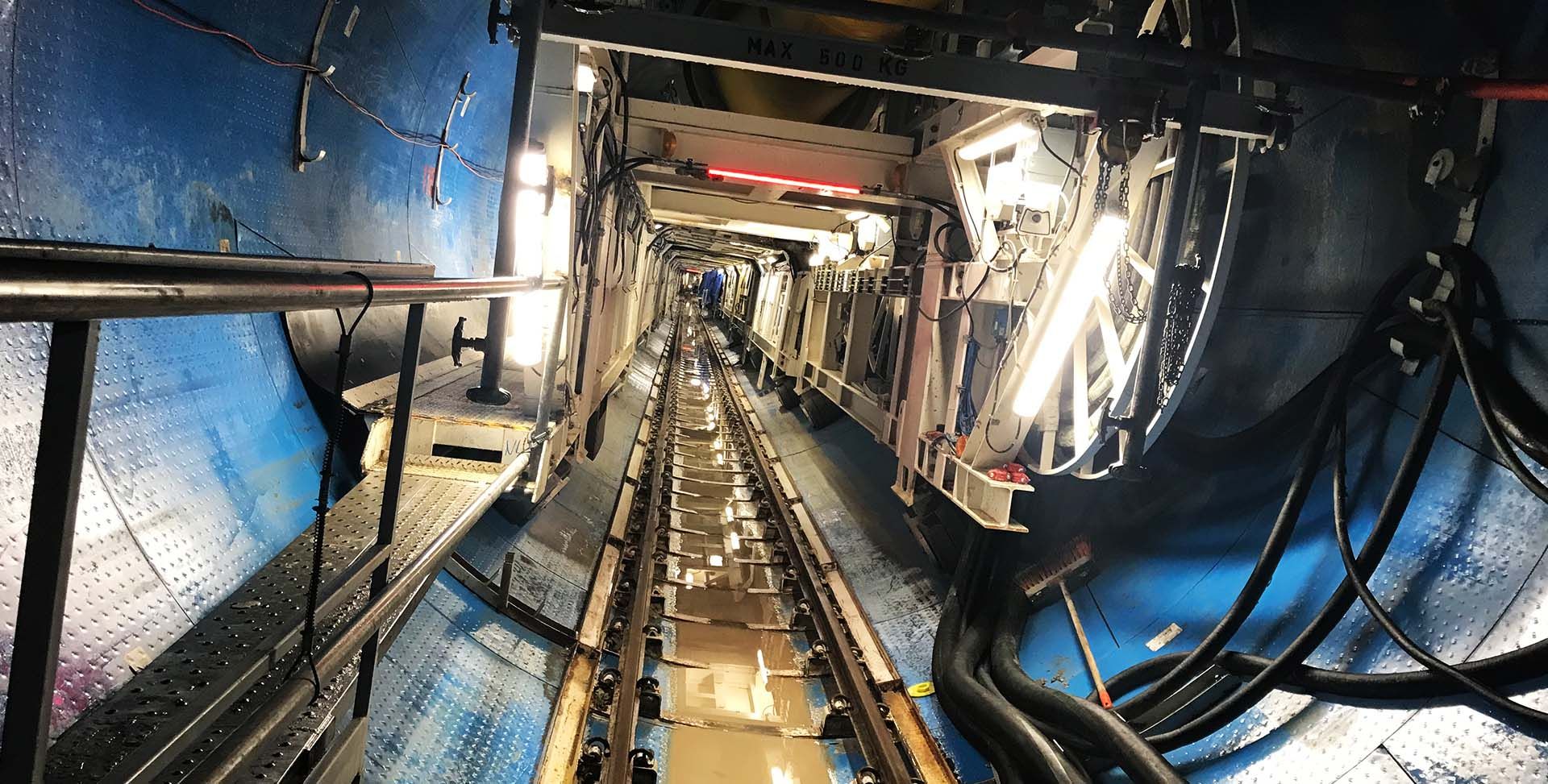Watercare’s Central Interceptor Project
Picture a tunnel 4.5 metres wide and 14.7 kilometres long that snakes its way underneath the city of Auckland. This $1.2 billion pipeline called the Central Interceptor – the largest water infrastructure project in New Zealand’s history – will significantly reduce wastewater overflows into central Auckland’s inland waterways and open spaces.
Auckland’s fast-growing population is expected to expand to two million by early next decade. But some of the wastewater infrastructure it relies on was built in the 1960s and is reaching the end of its operational life. Construction of the Central Interceptor began in 2019 and, when complete in 2026, the supersized pipeline will run from Western Springs, near Auckland Zoo, to a new pump station at the Māngere wastewater treatment plant. Able to store 226,000 cubic litres of water during heavy rainfall, the Central Interceptor will improve water quality and biodiversity in central Auckland’s creeks and streams, creating cleaner inland waterways and open spaces for people to enjoy.
At a glance
- ClientWatercare
- ServicesCertainty
- sectorInfrastructure
- LocationAuckland, New Zealand
Infrastructure that delivers impact
RLB has built a strong reputation for its infrastructure capability and now has a dedicated team of infrastructure specialists based in Auckland. Our team covers the full spectrum of quantity surveying, from pre-contract estimation to procurement, and from construction to completion. With the skills to set accurate budgets, implement rigorous financial control processes and build strong relationships with contractors, RLB is committed to delivering all projects on time and on budget.
RLB’s hardworking team embeds an ethos of strong relationships and honesty throughout the quantity surveying process to overcome a wide range of challenges. The complex and multi-faceted Central Interceptor is a great opportunity for RLB to play a part in providing infrastructure that makes Auckland a better place to live.Ed Cook, Director, RLB
The Central Interceptor is more than a tunnel. It will also include 18 access shafts, drop shafts, flow control and overflow structures, grit traps, air vents and air treatment facilities. An infrastructure project of such size and scale – delivered in an environment of rapidly-rising costs – demands data-driven decisions. RLB recently undertook sophisticated risk analysis to map the impact of Auckland’s white hot contracting market that is outstripping current inflation forecasts and modelled a range of scenarios. Armed with the right information, Watercare can make the best decisions to keep the project on track and on budget.
Introducing the star of the show…
The depth of the tunnel – which is up to 110 metres below private properties and parks – required specialist equipment. The project delivery team turned to German tunnel-boring technology developed by Herrenknecht for help. Named ‘Hiwa-i-te-Rangi’ after one of the stars in the Matariki star cluster, the project’s workhorse is 190 metres long, 5.47 metres in diameter and took 10 months to assemble.
Making progress at an average rate of 10 metres a day, the Hiwa-i-te-Rangi acts like a submarine, ensuring groundwater does not seep into and flood the tunnel. Across the project, up to 5,000 cubic metres of earth is removed each week and transported to another Watercare project which is currently transforming a former quarry on Puketutu Island into a regional park.
- 14.7km
wastewater tunnel
- 15m
below sea level under the Manukau Harbour
- 226,000
cubic litre storage capacity
Getting down to the fine grain
Auckland’s geology is influenced by volcanic activity. Extensive geotechnical investigations discovered everything from fine silt to rock-hard basalt and this influenced the route. The geological conditions at some shaft sites resulted in the two-stage excavation process. But there were many other factors to consider, such as how much groundwater would be extracted to the impact on urban areas above the tunnel. Each impact had to be carefully analysed and costed to help Watercare determine the best route for Hiwa-i-te-Rangi.
An unexpected find
While digging the shaft for Hiwa-i-te-Rangi to start work, the project team discovered a five-metre-thick layer of marine shells about 35 metres below the earth’s surface. This layer of fossils is around three million years old. Watercare is now partnering with Auckland Museum, Mana Whenua and specialist palaeontologists to document the fossils recovered from the site.
Exceptional sustainability is just the start
New Zealand’s largest water infrastructure project is also its most sustainable, which was confirmed with the ‘Leading’ rating from the Infrastructure Sustainability Council. The project’s design will deliver a whole-of-life energy and water reduction of around 40 per cent through clever design and investment in smart technology. The project also involves a wastewater re-use plant for construction water – a first in New Zealand.
Watercare’s ambition for the project extends well beyond construction, with a host of projects underway to improve the long-term wellbeing of communities along the tunnel route. Whether it’s the very visible pink hard hat program which supports the Breast Cancer Foundation or the Dig Deep literacy program that upskills people working on sites, the Central Interceptor is much more than a tunnel.

FURTHER INFORMATION:
Related and Notable Projects...
-
Serving the growing communities throughout the Waterloo Region
GRAND RIVER TRANSIT NORTHFIELD DRIVE BUS MAINTENANCE…
View -
Answering the biggest questions in astronomy starts with a quest to build the world’s largest
SQUARE KILOMETRE ARRAY
View -
The best infrastructure outcomes are delivered by the best people
INLAND RAIL
View





